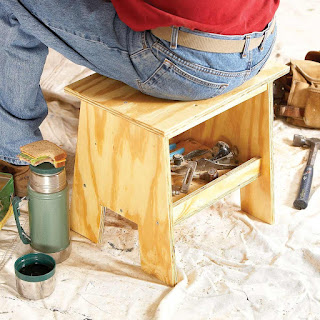DIY Woodworking Projects for Beginners and Experts Alike
Woodworking, a craft steeped in history and tradition, offers a rewarding avenue for creative expression and practical skill development. From simple projects ideal for novices to intricate designs challenging seasoned artisans, woodworking caters to all skill levels. This comprehensive guide explores a diverse range of DIY woodworking projects, categorized by difficulty, to inspire and guide enthusiasts of all abilities.
Beginner-Friendly Projects: Mastering the Fundamentals
Embarking on your woodworking journey requires a foundational understanding of basic tools and techniques. The following projects are specifically designed to build confidence and familiarity with essential woodworking practices.
Simple Shelves: A Foundation of Functionality
Constructing shelves is an excellent starting point for beginners. This project introduces fundamental concepts such as measuring, cutting, and assembling wood components. Utilizing readily available materials like pine or plywood, you can create floating shelves, corner shelves, or standard wall-mounted units. The focus should be on accurate measurements to ensure stability and a visually appealing outcome. Key skills learned: measuring, cutting with a hand saw or circular saw, drilling pilot holes, screwing, and finishing.
A Wooden Coasters Set: A Taste of Craftsmanship
Crafting a set of wooden coasters provides a manageable project that emphasizes precision and attention to detail. This project allows for creative expression through various wood types, finishes, and designs. Simple geometric shapes or intricate patterns can be incorporated, depending on the level of ambition. Key skills learned: precise cutting with a jigsaw or coping saw, sanding techniques, applying wood finishes (e.g., varnish, stain), and achieving a smooth, even surface.
Birdhouse Construction: Bringing Nature Closer
Building a birdhouse combines practical construction with an element of environmental stewardship. This project enhances understanding of basic joinery techniques, such as using nails or screws, while allowing for design customization to accommodate different bird species. Key skills learned: measuring, cutting, assembling, nailing/screwing, and basic carpentry techniques.
Intermediate Projects: Expanding Your Skillset
Once comfortable with basic techniques, intermediate projects introduce more complex joinery and construction methods, requiring a higher degree of precision and planning.
A Simple Wooden Box: Refining Joinery Techniques
Constructing a wooden box, beyond basic nailing, involves mastering joinery techniques like rabbet joints, dado joints, or miter joints. This project improves accuracy in cutting and assembling components for a sturdy and aesthetically pleasing result. Different box styles, such as a hinged lid box or a drawer box, can be explored to further enhance your skillset. Key skills learned: various joinery techniques, precise cutting, accurate assembly, finishing techniques, and potentially the use of clamps.
A Coffee Table: Designing for Functionality and Style
Creating a coffee table involves planning, design, and a broader range of woodworking techniques. This project necessitates the selection of appropriate wood, careful measurements for stability, and often incorporates more complex joinery methods. The design can range from a simple rectangular table to more intricate designs with shaped legs and detailed aprons. Key skills learned: advanced joinery, planning a larger project, working with larger wood pieces, assembling complex structures, and applying finishing touches for a polished appearance.
A Small Desk or Writing Table: Mastering Structural Integrity
Building a small desk or writing table further challenges your skills in structural integrity and joinery. This project demands careful consideration of weight distribution, stability, and the use of appropriate fasteners. Designs can range from simple, minimalist styles to more elaborate pieces with drawers or added shelving. Key skills learned: complex joinery, mortise and tenon joints, dovetail joints, creating sturdy structures, and applying finishes to a larger surface area.
Advanced Projects: Pushing Creative Boundaries
Advanced projects demand a mastery of various woodworking techniques, sophisticated design skills, and the ability to troubleshoot potential challenges.
A Full-Size Dining Table: A Testament to Skill
Constructing a full-size dining table is a significant undertaking that showcases a comprehensive understanding of woodworking principles. This project necessitates precise joinery, the ability to work with large wood pieces, and a keen eye for detail. The design can incorporate intricate leg designs, complex joinery techniques, and custom features. Key skills learned: advanced joinery techniques, working with large timber, creating complex structures, advanced finishing techniques, and potentially incorporating inlay work or carving.
Building a Chair: Mastering Ergonomic Design and Complex Joinery
Creating a chair presents a multifaceted challenge, combining ergonomic design principles with advanced joinery. This project demands a deep understanding of woodworking techniques, structural integrity, and the ability to create comfortable and visually appealing designs. Different chair styles, ranging from simple ladder-back designs to more ornate styles, provide opportunities to explore various design and construction methods. Key skills learned: advanced joinery, steam bending (potentially), creating comfortable and structurally sound seating, and high-level finishing techniques.
A Custom Bookshelf or Entertainment Center: A Synthesis of Skills
Designing and constructing a custom bookshelf or entertainment center requires a high level of planning, design, and execution skills. This project integrates various woodworking techniques, including joinery, measuring, cutting, assembly, and finishing. The scope of the project allows for significant creative freedom in incorporating shelves, drawers, doors, and other features. Key skills learned: project planning, advanced joinery, working with complex designs, integrating diverse woodworking techniques, and managing a large-scale project.
Regardless of the chosen project, remember that patience, precision, and a keen eye for detail are crucial for success. Start with smaller, simpler projects to build confidence and gradually progress to more challenging endeavors. Enjoy the process of learning, creating, and discovering the satisfaction of crafting functional and beautiful pieces from wood.












0 comments:
Post a Comment